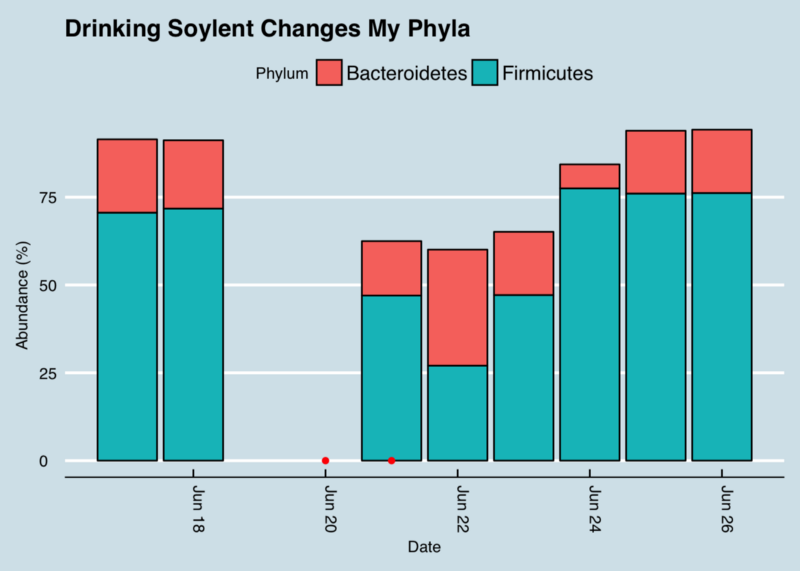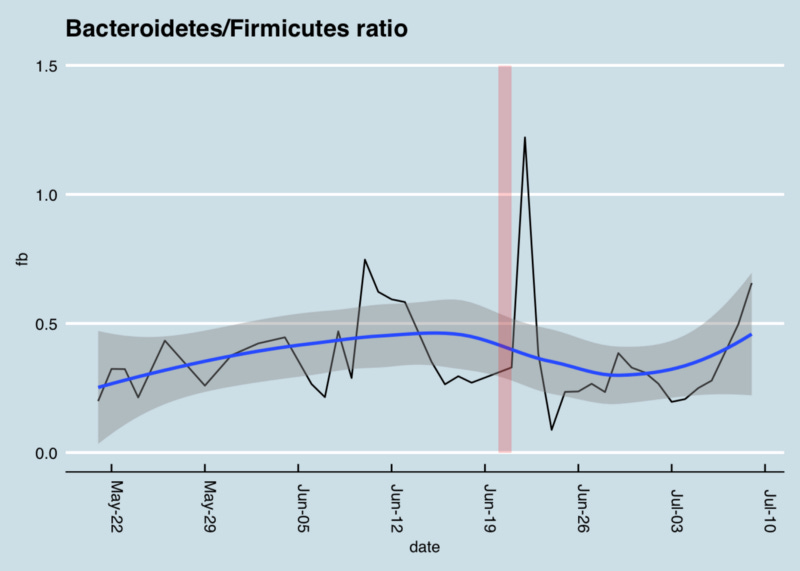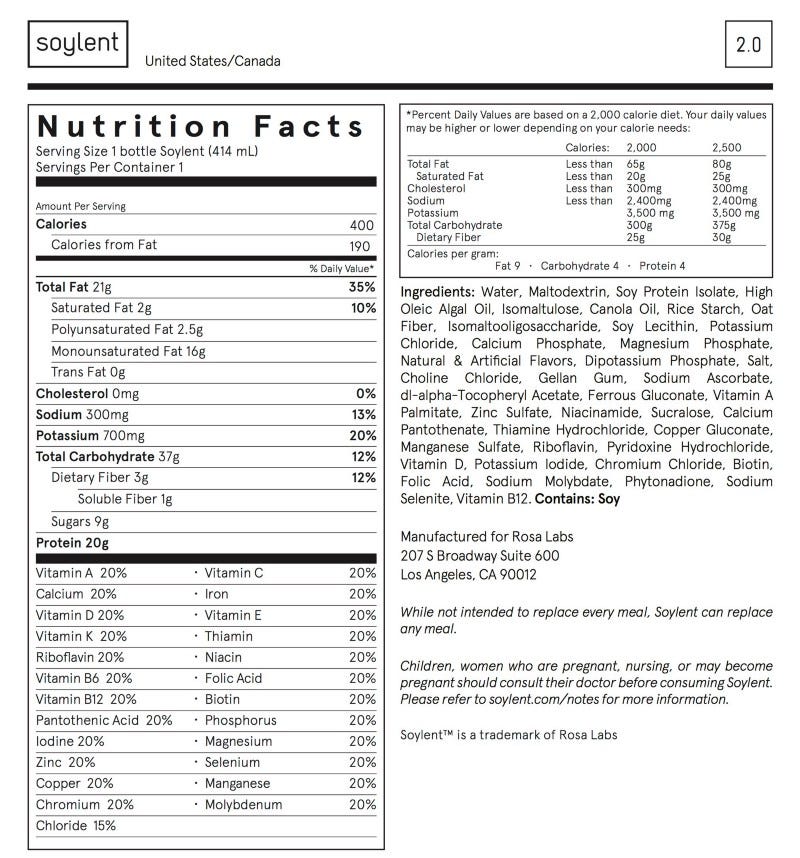Does Soylent affect my gut microbiome?
A team of undergraduates at the University of California Berkeley recently conducted an experiment with 14 people to see if the nutrition drink Soylent would change the microbiome. In an early published preprint of their results, they found that it increased the ratio of two key gut microbes, Bacteroidetes and Firmicutes, by a significant amount. How about me?
I’ve been testing my own microbiome near-daily for more than a year, and I track my daily food, exercise, sleep, and other variables too. When I looked at the days I drank Soylent, I found that my results match theirs:

See that big shift on Jun 22? The red dots are two days when I drank Soylent. Unfortunately, the samples failed for two of the dates in this chart, so I’m unable to see how my gut microbiome looked immediately before taking the Soylent, but still, isn’t it interesting that my F/B ratio was reasonably stable until then?
The shift is more dramatic if we look at a longer time frame, the weeks before and after the Soylent drinking:

Soylent-drinking days are highlighted in red
This is by no means a replication of their experiment, since mine was just an ad hoc test for two days among many other types of food-eating and tests that I regularly conduct on myself. That said, it is odd that I find a significant shift in that ratio, in the same direction as in their published trial.
Why would this be? The nutrition label gives a possible clue.

Nutrition label from a typical bottle of Soylent
One of the main ingredients, maltodextrin, is a man-made polysaccharide popular as a food additive for its usefulness as a thickener and texturizer. Usually synthesized from corn or wheat, it has been added to food products since the 1950s and is now in something like 60% of all packaged foods. It also has some well-known effects on the microbiome, at least in mice, and in the lab on the ability of some bacteria to form biofilms.
The Soylent web site explains that the maltodextrin is there to provide carbohydrates. Mixed with oat flour and other fibers to give it an overall lower glycemic index, it’s designed for easy digestion as a quick source of energy. That sounds like a recipe that should significantly affect the microbiome, especially if you use it as your main source of food.
What about diversity?

This chart shows a very crude measurement that tries to summarize a complex ecology into a single number, and as you can see it tends to vary sharply from day-to-day anyway. That said, it’s not that variable over time, and the few days after Soylent seem notably higher than the rest of the period measured. Was Soylent the cause? Maybe, but I had also been traveling that week, and it wasn’t a rigorous enough test to see. Still, something for future research to consider.
Bottom line. My very brief experiment here makes me think that Soylent’s effect is noticeable, but that’s hardly surprising; almost any new food will affect the microbiome.
Your real question: Is Soylent Good or Bad? unfortunately I can’t answer. Like most everything else about the microbiome, science doesn’t know enough to say one way or another.
More details are available on the Mycrobes site of the student group that did the experiment. There is also a lively Reddit discussion.
Meanwhile, please check out my other microbiome experiments. Also, if you send me results from your own gut sequencing, I’m always happy to compare them with mine and let you know what I think.


